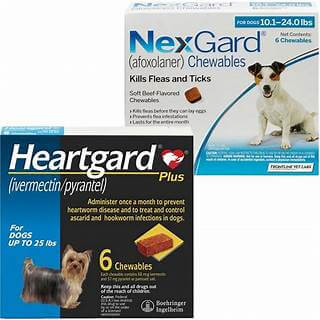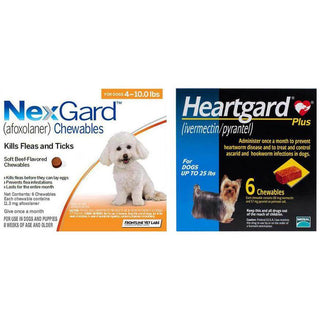Common Brand Names
Single Ingredient
- Program Injectable for Cats
- Program Oral Suspension for Cats
- Program Tablets for Dogs
Mixed Ingredient
- Sentinel Spectrum for Dogs (with Praziquantel + Milbemycin Oxime)
- Sentinel Flavor Tabs (with Milbemycin Oxime) for Dogs
Lufenuron Uses
Lufenuron is a larvicide that is used to control fleas in cats & dogs. Unfortunately, Lufenuron has no effect against mites, lice, or ticks.
It is mainly combined with Praziquantel and Milbemycin Oxime, which will control parasitic worms.
Method Of Application
Lufenuron is typically administered to pets orally, either in the form of a pill or chewable tablet. However, the recommended dosage and frequency of treatment will vary depending on the specific product and the size and weight of the pet. Therefore, it is important to follow the manufacturer's instructions and consult with a veterinarian before administering any flea control treatment to a pet, especially if the pet has any pre-existing health conditions or is taking any other medications.
Some topical treatments containing Lufenuron are applied to the animal's skin, usually at the back of the neck, and it's usually recommended to apply once a month.
It's important to note that Lufenuron is not effective on adult fleas, but on flea eggs and larvae, so it should be used in combination with adulticides for the best results.
Dosage And Administration
The recommended dosage of Lufenuron for pets varies depending on the product and the size and weight of the pet. Therefore, it's important to follow the manufacturer's instructions and consult with a veterinarian before administering any flea control treatment to a pet.
For example, for dogs:
- Program Flavor Tabs Tablets: The recommended dose is 50 mg/kg (22.7 mg/lb) of body weight, administered once a month.
- Sentinel Spectrum Chewable Tablets: The recommended dose is 25 mg/kg (11.3 mg/lb) of body weight, administered once a month.
For cats:
- Program Flavor Tabs Tablets: The recommended dose is 50 mg/kg (22.7 mg/lb) of body weight, administered once a month.
It's important to note that Lufenuron is not effective on adult fleas, but on flea eggs and larvae, so it should be used in combination with adulticides for the best results. Also, the administration should be done regularly, usually once a month.
It's important to note that dosage may vary depending on the specific product and the size and weight of the pet. Consult with a veterinarian before administering any flea control treatment to a pet, especially if the pet has any pre-existing health conditions or is taking any other medications.
Possible Side Effects
Lufenuron is generally considered safe for use in pets when used as directed. However, as with any medication, there is a risk of side effects.
Some possible side effects of Lufenuron in pets may include:
- Digestive upset, such as vomiting, diarrhea, or loss of appetite
- Lethargy or drowsiness
- Itching, redness, or irritation at the site of application (for topical treatments)
Contact your veterinarian immediately if your pet experiences any of these side effects. More severe reactions, such as allergic reactions, can occur in rare cases. If you notice signs of a severe reaction, such as difficulty breathing, hives, or swelling of the face, contact your veterinarian immediately.
It's important to remember that not all pets will experience side effects, and most will tolerate the treatment well. If you have any concerns regarding the treatment, please get in touch with your veterinarian.
Precautions
When using Lufenuron for flea control in pets, several precautions should be taken:
- Consult with a veterinarian before using Lufenuron on a pet, especially if the pet has any pre-existing health conditions or is taking any other medications.
- Follow the instructions provided by the manufacturer for dosage and administration.
- Keep the medication out of reach of children and other pets.
- Do not use Lufenuron on pets that are pregnant or nursing.
- Do not use Lufenuron on pets that are sensitive to insect development inhibitors.
- Use Lufenuron in combination with other flea control methods, such as regular grooming and vacuuming, to provide additional protection for your pet.
- Do not use Lufenuron on kittens or puppies younger than eight weeks of age.
- Lufenuron is not effective on adult fleas, so it should be used in combination with adulticides for the best results.
- Store Lufenuron at room temperature, and keep it in the original container.
- Contact your veterinarian immediately if you notice any side effects in your pet.
By following these precautions, you can help ensure the safe and effective use of Lufenuron for flea control in your pet. Of course, it's always best to consult with your veterinarian for the best approach to flea control on your pet.
Signs Of Toxicity
Lufenuron is generally considered safe for use in pets when used as directed. However, in rare cases, toxicity can occur if a pet accidentally overdoses or has an allergic reaction to the medication.
Signs of toxicity in pets may include:
- Vomiting
- Diarrhea
- Loss of appetite
- Lethargy or drowsiness
- Seizures
- Tremors
- Itching, redness, or irritation at the site of application
- Difficulty breathing
- Hives or swelling of the face
If you notice these signs of toxicity in your pet after administering Lufenuron, contact your veterinarian immediately. Your veterinarian will be able to advise you on the best course of action and may provide treatment to help alleviate any symptoms of toxicity. In severe cases, hospitalization may be necessary.
It's important to follow the instructions provided by the manufacturer for dosage and administration and to consult with a veterinarian before administering any flea control treatment to a pet, especially if the pet has any pre-existing health conditions or is taking any other medications.
Storage
Oral: Store below 77°F/25°C.
Tablet: Always store in a dry place, protected from light.
Injectable: Protect from freezing.
Disclaimer
The information provided on this page is for normal reference only and is not intended to replace veterinary advice or packaging label. You should consult your vet first. Here may have included only some of the uses, side effects, brand names, or applications.






